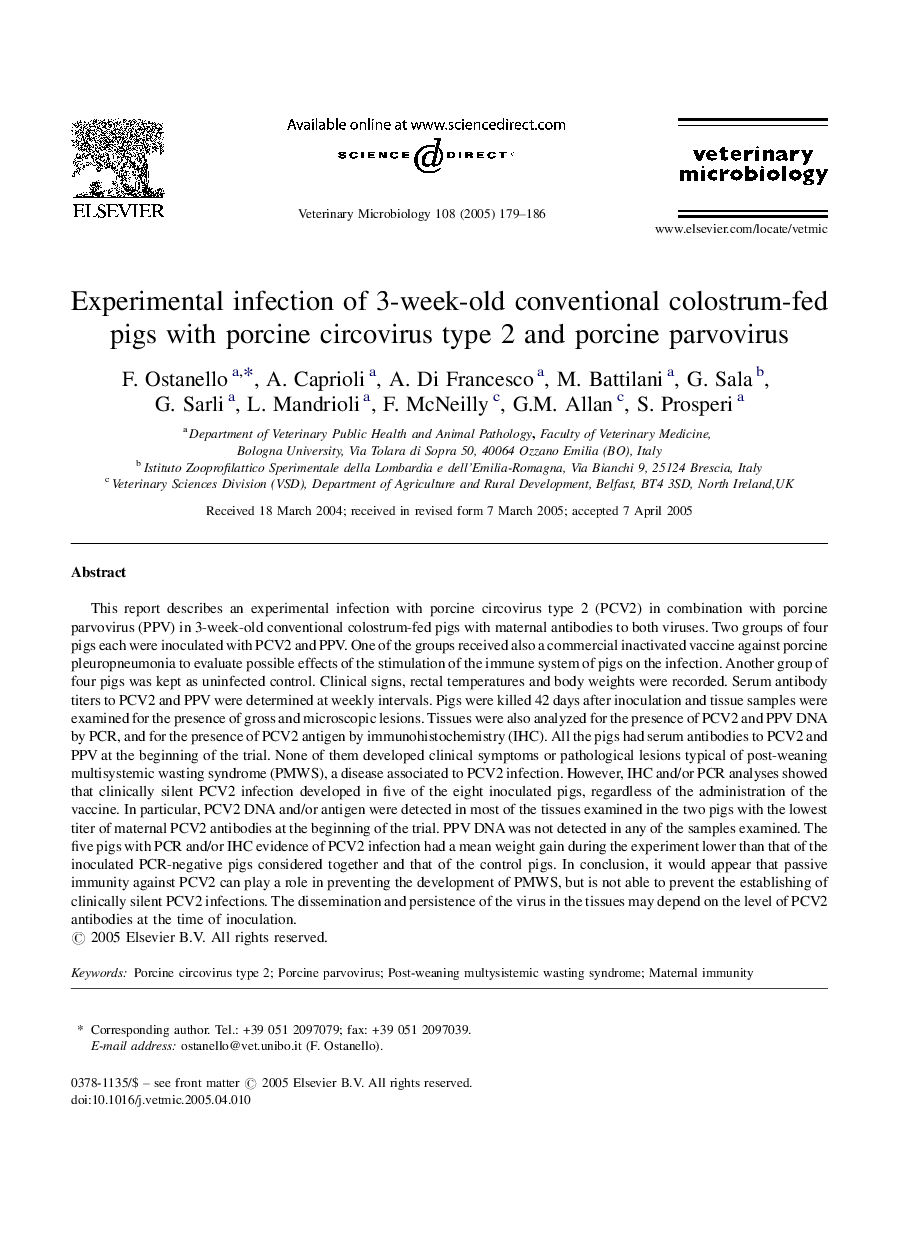| Article ID | Journal | Published Year | Pages | File Type |
|---|---|---|---|---|
| 8989465 | Veterinary Microbiology | 2005 | 8 Pages |
Abstract
This report describes an experimental infection with porcine circovirus type 2 (PCV2) in combination with porcine parvovirus (PPV) in 3-week-old conventional colostrum-fed pigs with maternal antibodies to both viruses. Two groups of four pigs each were inoculated with PCV2 and PPV. One of the groups received also a commercial inactivated vaccine against porcine pleuropneumonia to evaluate possible effects of the stimulation of the immune system of pigs on the infection. Another group of four pigs was kept as uninfected control. Clinical signs, rectal temperatures and body weights were recorded. Serum antibody titers to PCV2 and PPV were determined at weekly intervals. Pigs were killed 42 days after inoculation and tissue samples were examined for the presence of gross and microscopic lesions. Tissues were also analyzed for the presence of PCV2 and PPV DNA by PCR, and for the presence of PCV2 antigen by immunohistochemistry (IHC). All the pigs had serum antibodies to PCV2 and PPV at the beginning of the trial. None of them developed clinical symptoms or pathological lesions typical of post-weaning multisystemic wasting syndrome (PMWS), a disease associated to PCV2 infection. However, IHC and/or PCR analyses showed that clinically silent PCV2 infection developed in five of the eight inoculated pigs, regardless of the administration of the vaccine. In particular, PCV2 DNA and/or antigen were detected in most of the tissues examined in the two pigs with the lowest titer of maternal PCV2 antibodies at the beginning of the trial. PPV DNA was not detected in any of the samples examined. The five pigs with PCR and/or IHC evidence of PCV2 infection had a mean weight gain during the experiment lower than that of the inoculated PCR-negative pigs considered together and that of the control pigs. In conclusion, it would appear that passive immunity against PCV2 can play a role in preventing the development of PMWS, but is not able to prevent the establishing of clinically silent PCV2 infections. The dissemination and persistence of the virus in the tissues may depend on the level of PCV2 antibodies at the time of inoculation.
Related Topics
Life Sciences
Agricultural and Biological Sciences
Animal Science and Zoology
Authors
F. Ostanello, A. Caprioli, A. Di Francesco, M. Battilani, G. Sala, G. Sarli, L. Mandrioli, F. McNeilly, G.M. Allan, S. Prosperi,
